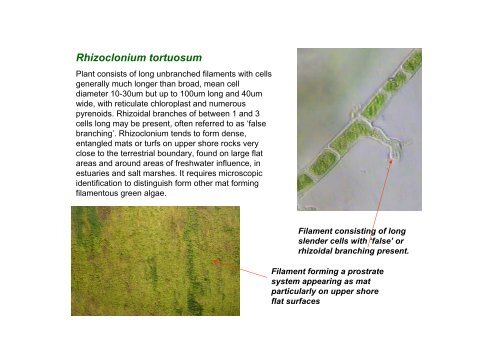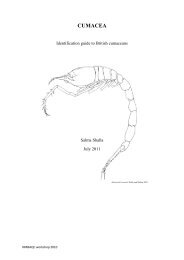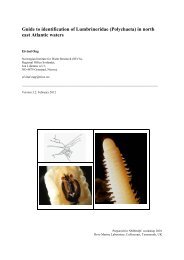s A Field Guide to the British Seaweeds - NMBAQC
s A Field Guide to the British Seaweeds - NMBAQC
s A Field Guide to the British Seaweeds - NMBAQC
Create successful ePaper yourself
Turn your PDF publications into a flip-book with our unique Google optimized e-Paper software.
Rhizoclonium <strong>to</strong>rtuosum<br />
Plant consists of long unbranched filaments with cells<br />
generally much longer than broad, mean cell<br />
diameter 10-30um but up <strong>to</strong> 100um long and 40um<br />
wide, with reticulate chloroplast and numerous<br />
pyrenoids. Rhizoidal branches of between 1 and 3<br />
cells long may be present, often referred <strong>to</strong> as ‘false<br />
branching’. Rhizoclonium tends <strong>to</strong> form dense,<br />
entangled mats or turfs on upper shore rocks very<br />
close <strong>to</strong> <strong>the</strong> terrestrial boundary, found on large flat<br />
areas and around areas of freshwater influence, in<br />
estuaries and salt marshes. It requires microscopic<br />
identification <strong>to</strong> distinguish form o<strong>the</strong>r mat forming<br />
filamen<strong>to</strong>us green algae.<br />
Filament consisting of long<br />
slender cells with ‘false’ or<br />
rhizoidal branching present.<br />
Filament forming a prostrate<br />
system appearing as mat<br />
particularly on upper shore<br />
flat surfaces




